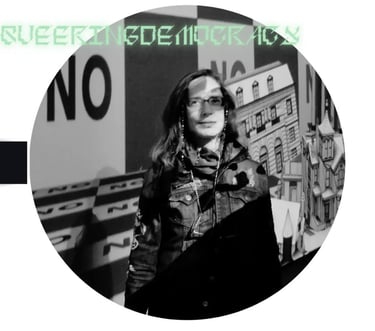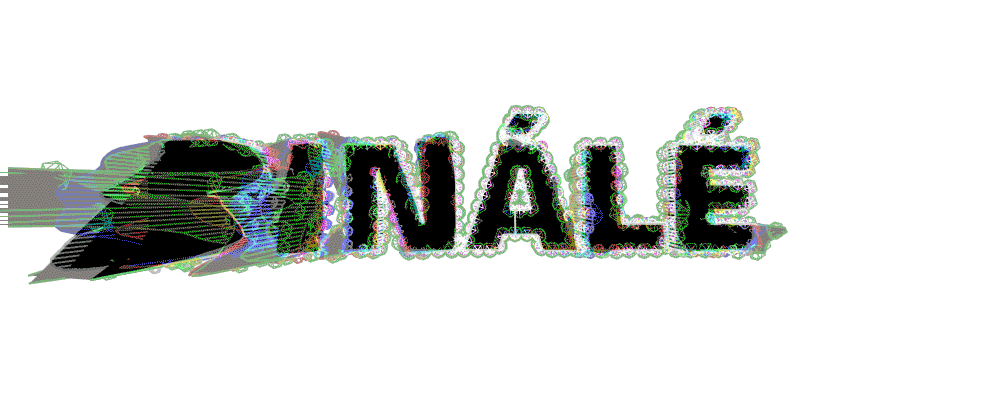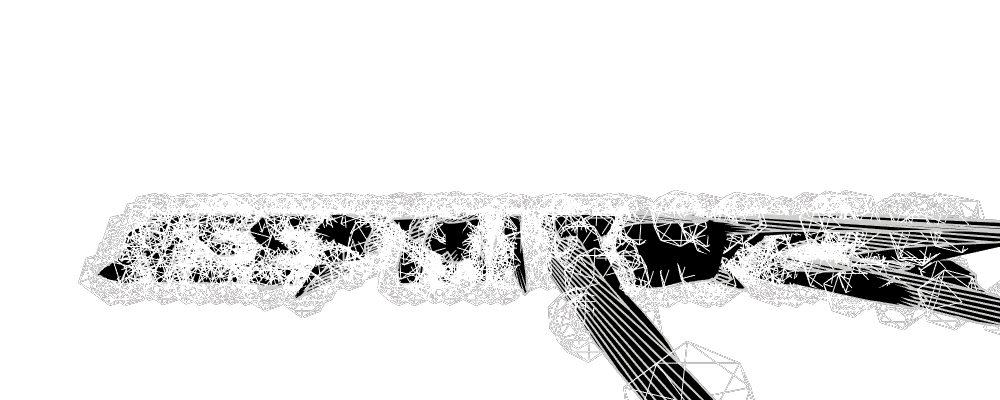CLAUDIA HART
Claudia Hart was educated in art and architectural history in the late seventies and early eighties at NYU and Columbia University. This training was and remains formative to her digital art practice, one that emerged in the late nineties after she first exhibited intermedia work for a dozen years in the NY downtown art scene. Hart then transferred her analog practice into the digital space. As a result, she has always bridged these two worlds.
Hart’s strategy is conceptual. She tends to make distinct bodies of work that track an art-historical research, setting herself up as both its subject and its object. Her work is profoundly reflexive and consistently so. Her approach is two-pronged.
As a feminist artist, Hart speaks in the voices of patriarchs. She expands on tropes borrowed from canonical philosophers, poets, painters. In her first analog exhibitions, she impersonated Jean-Jacque Rousseau, Lord Byron and Niccolo Machiavelli. In the late nineties, she reinvented herself as a digital artist but one concerned only with the virtual simulations that she thought of as “post-photography.” Hart then continued to channel history but thinking of her animations, experimental theater, VR and AR work as simulated historical “enactments” in an artificial world. As a digital artist, she appropriated the artistic styles of Renaissance and Baroque painters, Impressionist and Modernist masters, and in her audio work, the literary voices of Lewis Carroll, Thomas Jefferson, Henry Ford and Walter Gropius. Using historical references, Hart still embraces only emerging technologies, thinking of her translations of canonical art into digital form as part of an historical process that is also its meaning. In addition, Hart inverts the rationalist voice and aesthetic language of canonical male patriarchs, turning them into something playful and fantastical. She appropriates sober historical aesthetics, reinventing them as theatrical decor and liminal environments.
As an art historian, Hart analyzes and positions her own work and also the work of her peers. She traces the history of representation from the analog to the digital. She has curated many group exhibitions, written scholarly papers and developed pedagogy (in the form of curricular spine at the School of the Art Institute of Chicago) as well as publishing multiple book chapters and myriad critical writings, all about different aspects of post-photographic simulations. Hart places her own work and the work of fellow partisans of a “simulations” media-art community she also cultivated, into an emerging art history. She contextualizes its various practices within a history that begins with the invention of mathematical perspective and extends through photography, finally arriving at the present moment when 3D animation, virtual and augmented realities and the NFT Metaverse have seized the public imagination.
EMPIRE
2010
10:51
3 Channel 3D Animation Installation
Empire features a four-screen continuous surround animation of a virtual monument running the “course of empire.” It is inspired by the 1836 paintings of Hudson River School artist Thomas Cole’s series. Empire slowly decays and molds as it transits from sunrise to sunset. This piece uses a cenotaph drawn by Étienne-Louis Boullée the 18th-century French visionary architect as its source. It slowly decays and morphs from pink to blue, from sunrise to sunset. Camera motion is a slow zoom, direction z.
Empire premiered at the Wood Street Gallery, an art center dedicated to media at, in Pittsburgh in 2010. For the opening, Hart created a performance featuring the composer Ella Buckley as an extension of her world. Buckley composed the music for the animation, which also serves as the basis for a live improvisatory “performance object,” on view during the installation opening.
A box made from crude stage scrim hangs in the center of the installation space. Every half hour it is lowered to reveal the performer, suspended from wires, hovering 18-inches above the ground. The performer wore a dress designed by Kristin Mariani Frieman, made from plastic screen material. A rose is projected on the dress.
The cyborg Buckley wears jewelry consisting of miniaturized electronic instruments of her own design, complimented by an array of contact microphones attached to her skin. She performs for 10 minutes by stroking her body and rubbing her legs together. At the end of this cycle, Buckley is lowered and the scrim box raised. The performance is repeated throughout the course of the evening.
Empire was revived in a 3-channel version in 2018 by Kelani Nichole, curator and director of Transfer Gallery, LA, as part of her Download projection system. It toured internationally between 2016 and 2019.
A DOLL’S HOUSE
2016
10:00
3 Channel 3D Animation Installation
Empire features a four-screen continuous surround animation of a virtual monument running the “course of empire.” It is inspired by the 1836 paintings of Hudson River School artist Thomas Cole’s series. Empire slowly decays and molds as it transits from sunrise to sunset. This piece uses a cenotaph drawn by Étienne-Louis Boullée the 18th-century French visionary architect as its source. It slowly decays and morphs from pink to blue, from sunrise to sunset. Camera motion is a slow zoom, direction z.
Empire premiered at the Wood Street Gallery, an art center dedicated to media at, in Pittsburgh in 2010. For the opening, Hart created a performance featuring the composer Ella Buckley as an extension of her world. Buckley composed the music for the animation, which also serves as the basis for a live improvisatory “performance object,” on view during the installation opening.
A box made from crude stage scrim hangs in the center of the installation space. Every half hour it is lowered to reveal the performer, suspended from wires, hovering 18-inches above the ground. The performer wore a dress designed by Kristin Mariani Frieman, made from plastic screen material. A rose is projected on the dress.
The cyborg Buckley wears jewelry consisting of miniaturized electronic instruments of her own design, complimented by an array of contact microphones attached to her skin. She performs for 10 minutes by stroking her body and rubbing her legs together.
At the end of this cycle, Buckley is lowered and the scrim box raised. The performance is repeated throughout the course of the evening.
Empire was revived in a 3-channel version in 2018 by Kelani Nichole, curator and director of Transfer Gallery, LA, as part of her Download projection system. It toured internationally between 2016 and 2019.



